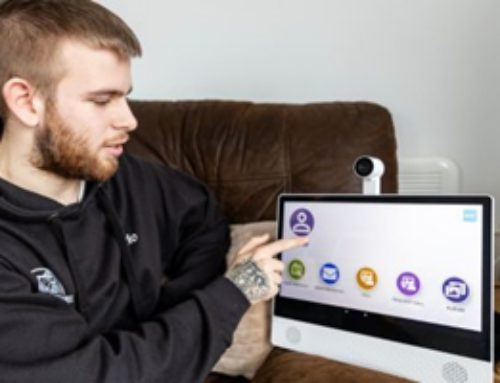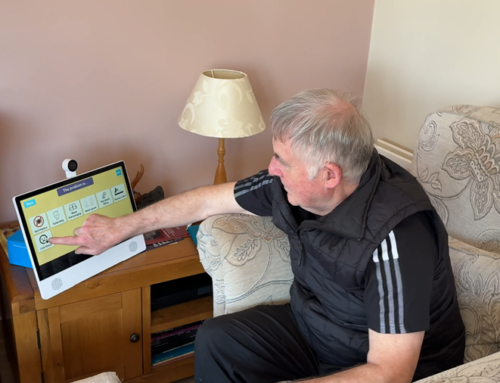Faster Horses
Henry ford once said, “If I asked people what they wanted, they would have said faster horses”. He then made motorcars for the mass market. You may also have heard about Bertha Benz’s 1886 horseless carriage trip to visit her mother (and scaring the life out of nearby villagers). Not more horses or faster horses, they looked at fundamentally new way of solving the fast transport problem.
Within adult social care, when asked what we need in community care or home care, everyone says, “We need more home care workers”. With that as the goal, care providers are looking at new approaches to attract new blood into the industry and desperately trying to retain those who are already in the system. We currently have a shortfall of 130,000 care workers today. So, unless we can somehow convince a significant minority of school and university leavers to join the home care industry or throw open our borders for mass immigration, we are kind of stuck.
At the heart of home care is a human-to-human connection and human-to-human support. However, with severe lack of carers, we are leaving vulnerable people without adequate support. This could mean they are stuck in an NHS bed unnecessarily, in a step-down facility or just stuck at home with inadequate or no support. Those who have families nearby (and if they have spare time) may get some informal support, but the vast majority don’t have such supportive families who live next door.
I wonder if there is scope for us to look at our current predicament in a fundamentally different way? Could we view the care problem through the ‘Ford and Benz’ lens and see if it throws up better analysis? We need to ask, did Ford and Benz have a ‘shortage of horses’ problem or a transportation problem? The solutions they came up with weren’t easy (just watch Bertha’s interaction with the pharmacist) or readily available, but they persevered to take a new approach to solving the transportation problem.
I have to raise a point here, currently our only approach to supporting people in their own home is to go to homecare agencies who have home care staff who can travel by car to a persons home to deliver care. This is the mainstay of our care at home enterprise and questioning this model is, in some quarters, sacrilegious.
We sometimes disregard the innovations of the past 50 years and carry on the same old tried and tested model (which is unsustainable). Don’t get me wrong, we absolutely need homecare workers, what I am questioning is the mindset that says, it’s the only solution.
A new approach to care
So here are my 5 pointers for you and your teams to mull over and come up with new ideas:
- Can we dissect the care package and find out WHO and HOW we can fulfil the individual tasks within it? If there was no home care worker available, who and how would we fulfil this task. E.g., we know personal care is important and we need someone to help in person. However, I have seen so many care packages which fall under hydration, nutrition, medication adherence support, does this need to be in person?
- Can we look at other community and business assets within the area that can help deliver some part of the care package. I have shadowed care workers during 30 minute and 45 minute lunchtime care appointments, all they had time to do was make beans on toast and a cup of tea. It cost the care commissioner £10-£12 for that visit. I have then sat in Greggs in the same area on a Saturday and watched young workers on bikes, cars and mopeds collect sausage rolls etc. to deliver to someone who couldn’t be bothered to leave the house. Why are these assets not part of our care solution?
- We’ve seen a rise in gig economy and has its pros and cons, but there has been a marked increase in ‘non-personal’ care work being done by people who may have a couple of hours here and there. All of these are co-ordinated through a marketplace that brings carers and users together, and matches them. Could we aggregate these so that we are able to join the dots and plug those gaps? This is already happening in the private pay sector. Can council commissioned care also tap into these part-time workers, stay at home parents and student workers, who all live in villages and towns all over the UK to help undertake some of the tasks?
- It is now so easy to go any buy smart sensors to make a house a smart home. The trick is to have the sensors work at scale for care. What can sensors tell us about the individual? Has the kettle been switched on? Has microwave been used? Has the fridge door opened? Are there too many visits to the bathroom during nights? We could collect rich data from a person’s home to be able to proactively support the individual. And no, we don’t need another app that collects this info and sells our data, it needs to be done in a care environment so it’s only used for caring.
- We know person-to-person care is needed and appreciated. Where we have a shortage of workers, would it help if the person offering support was a vetted and trained individual but happens to offer the support virtually sitting in a Telecare centre? I call them the Digital Carers. I know this is a shameless plug for our own Ethel solution, but I have seen so many occasions where care workers, OTs, Physios and Geriatricians were able to offer support to people in their own home, albeit through a large-dedicated care device like Ethel. The ability to see a client clearly and say, “Hi John, how are you today, its 10 am and time to take your medication. Could you take it now please while I am on the call?” is a game changer when it comes to video-based medication adherence. Plus, you are also able to save hundreds of miles on care trips which helps towards our sustainable goals of becoming Net Zero.
There is no getting away from the fact that new approaches are needed to solve our current care crisis. And digital care will be fundamental to these new approaches. The question isn’t, “Whats your digital strategy for care?”, it is actually, “What is your care strategy in a digital world?”
I suspect we will see a rise in the Digital Carers who fall into one or more of the above categories I have raised above. These digital carers will not replace existing carers, but instead complement them so that we can enhance our staff capacity and deliver more care to people in their own homes.






